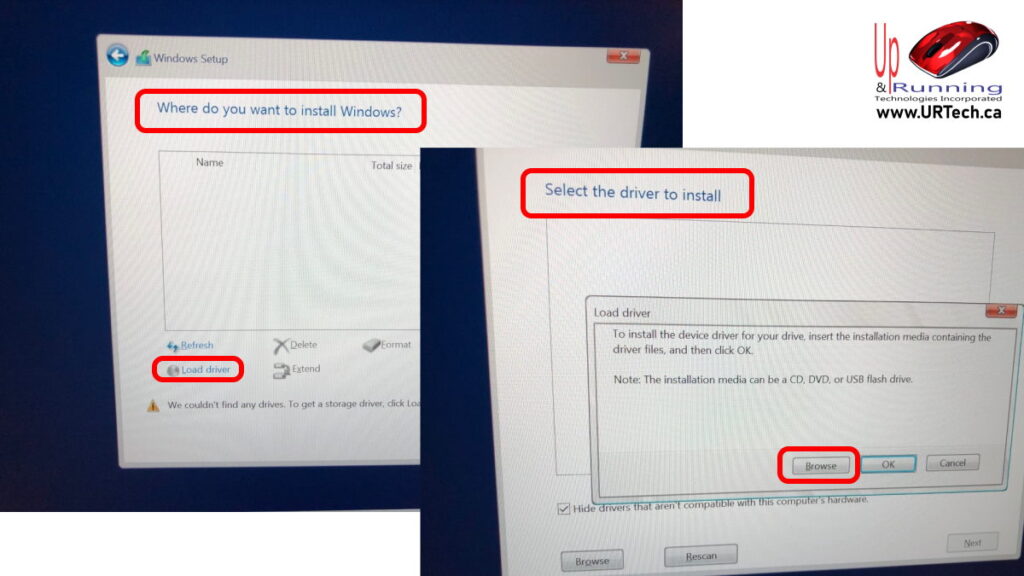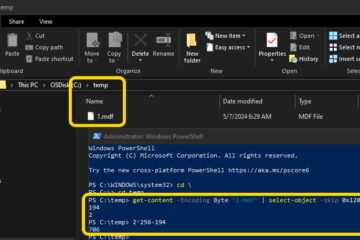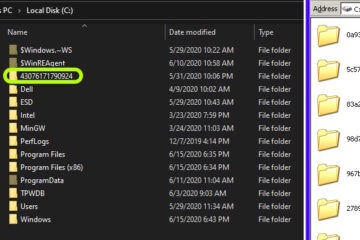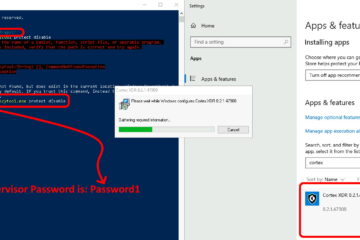A client of ours has a Lenevo Thinkbook 14 Gen 2 which she wants to wipe and load a fresh Windows 10 or Windows 11. She followed our video instructions on how to do a bare metal Windows 11 (same as Windows 10) install but got stuck on the WHERE DO YOU WANT TO INSTALL WINDOWS screen.
As you can see in this screenshot, she knew that she had to click the LOAD DRIVER link and then BROWSE but couldn’t find the drivers.

The solution should have been very easy. Until just recently you used to be able to download the driver files directly from Intel or Lenovo, but now they’re only available in a compressed form that will not run during Windows installation. This was very frustrating but there are two easy ways around it.
1 – Download Intel RST drivers for VMD, RAID, and AHCI From Us
Unzip those files to a folder on your Windows 10 / 11 USB stick named RST. Note that the folder name actually makes no difference. We are specifying it only to make the instructions below less complex. also you could use a different USB stick if you wanted but that just seems to add complexity.
We downloaded these drivers directly from Intel and extracted them using a method we explained below so if you don’t trust us just keep reading.
2 – Download Intel RST drivers for VMD, RAID, and AHCI Directly from Intel & Decompress Them Yourself
- As of the time he wrote this the most current versions of the Intel rapid storage technology driver installation kit could be downloaded directly from Intel here:
- After you’ve downloaded the desired Intel SetupRST.EXE, copy it to C:\TEMP
- Open a Powershell as an Administrator
- That CMD prompt and Windows terminal will not work. It must be a Powershell
- Enter this command:
.\SetupRST.exe -extractdrivers C:\RST\ - copy the resulting RST folder to your Windows 10 / 11 media USB stick (or use a different stick… your call)
Have the Windows Installer Use Intel RST Storage Drivers
- Boot up off of the Windows Media Installation Disk and start the Windows installation process
- On the Where Do You Want To Install Windows screen, click LOAD DRIVERS (bottom left)
- This file should be under ..RST\Production\Windows10-x64\15063(or other number)\Drivers\VMD on your USB stick
- Select the file iaStorVD.sys
At this point Windows should be able to talk with the Intel Disk Controller and in turn show you the hard drives you have available.
If this is on a new hard drive, You are on your way but if you’re using an old hard drive with data on it already we normally select each existing partition and the click DETELE, on all of the existing partitions so we can start completely fresh.



7 Comments
WASIM · November 22, 2023 at 3:34 pm
i can’t make it work, can you help me find more drivers perhaps older ones
Mark · November 13, 2023 at 8:47 am
Didnt work
Ian Matthews · November 13, 2023 at 3:28 pm
If the process is not working for you, it is most likely that you have the wrong drivers (i.e. wrong model, wrong OS, 32bit when you need 64bit…) I have done this MANY times and never had it fail… other than when I had the wrong drivers. I hope you can get it working Mark
jan · September 18, 2023 at 4:19 am
This was very helpfull. Thanks very much.
Ted B · September 3, 2023 at 11:15 am
Thank you very much – I’m doing a bare metal install with Samsung 980 Pro in a RAID 1 configuration, between UEFI/BIOS, Secure Boot, etc. etc. this has not been quick! Your guide was very helpful.
Guillaume Deneyer · August 4, 2023 at 5:05 pm
Hello, I had the issue on a Clevo Laptop, i spent hours looking for a workaround without succes. You saved my day, thank you !!
Muhammed Cinsdikici · July 10, 2023 at 6:50 am
Thank you so much about this real solution. If you have not put RST Driver usage “at the Windows Installation stage” for NON-appearing nvme disk, I could not install Windows 11 22H2 latest version (although the laptop is the newest HP and also the windows ISO media is the latest one !)